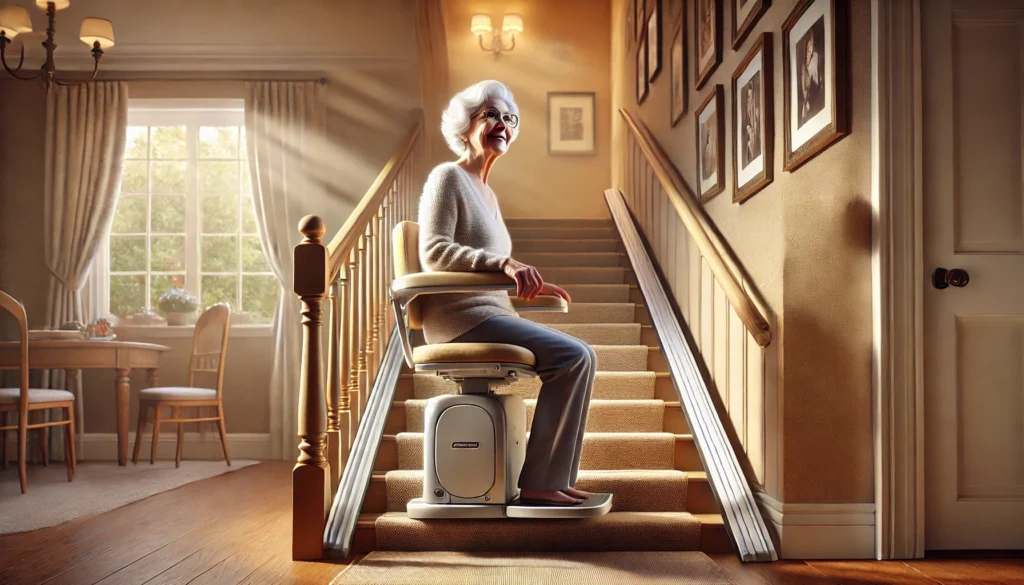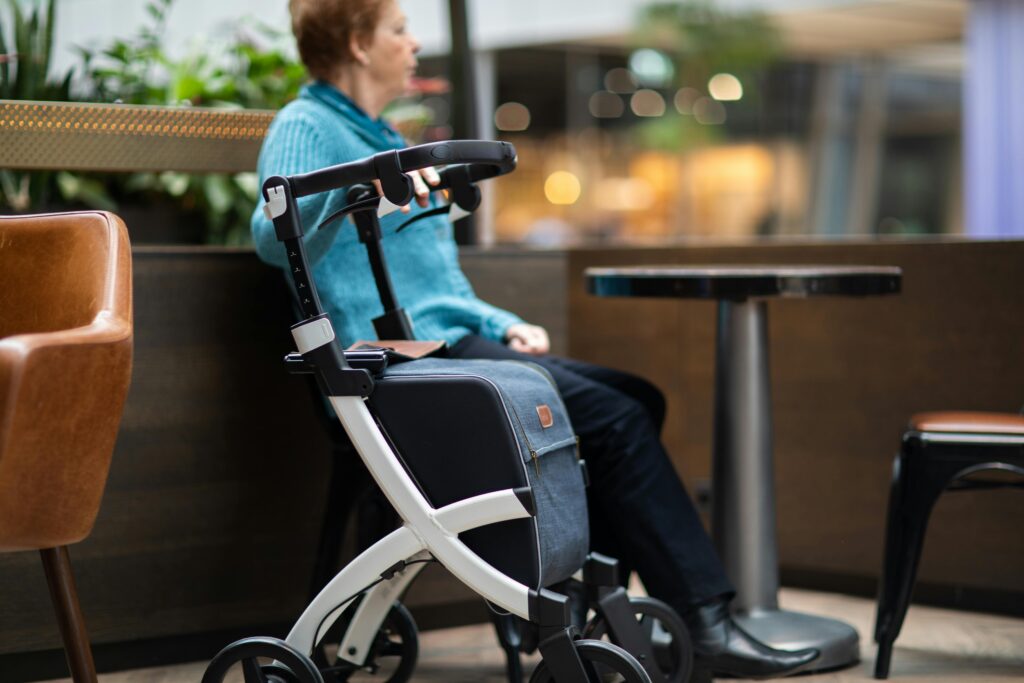For seniors or individuals with mobility challenges, stairs can become a major obstacle in the home. A stair lift provides a safe and convenient way to move between floors, reducing the risk of falls and increasing independence. But how do stair lifts work? Let’s break it down.
What Is a Stair Lift?
A stair lift is a motorized chair attached to a rail system installed along a staircase. It allows users to sit comfortably and be transported up or down the stairs with the push of a button.
How Does a Stair Lift Work?
1. Rail System Installation
- A metal track is securely mounted along the staircase.
- The rail follows the shape of the stairs (straight or curved).
2. Motorized Chair or Platform
- A seat, footrest, and armrests provide comfort and stability.
- Some models have a platform for wheelchair users (called a platform lift).
3. Battery or Electric Power
- Most stair lifts run on battery power, ensuring they work even during a power outage.
- Some are plugged into an outlet, requiring electricity to function.
4. Controls for Easy Use
- A remote control or buttons on the chair allow users to move up or down.
- Many models have safety sensors that stop the lift if an object blocks the path.
Types of Stair Lifts
🔹 Straight Stair Lifts – Installed on simple, straight staircases. (Most affordable option.)
🔹 Curved Stair Lifts – Custom-built to fit staircases with curves or landings. (More expensive.)
🔹 Outdoor Stair Lifts – Weather-resistant models for exterior staircases.
🔹 Standing Stair Lifts – Designed for users who have trouble bending their knees.
Benefits of a Stair Lift
✔ Prevents falls – Reduces the risk of stair-related accidents.
✔ Increases independence – Seniors can move freely between floors.
✔ Easy to use – Simple controls and smooth operation.
✔ Works during power outages – Battery-powered models ensure continued use.
Cost and Installation
- Straight stair lifts: $2,500–$5,000
- Curved stair lifts: $8,000–$15,000
- Outdoor stair lifts: $4,000–$12,000
- Installation time: Typically a few hours to a day, depending on complexity.
- Medicare and insurance may cover costs in some cases, especially with medical necessity.
A stair lift is a great investment for seniors who want to stay in their homes safely. If you’re considering one, consult a professional installer for recommendations based on your home’s layout and budget.
Would you like help finding stair lift providers near you? 🚀





